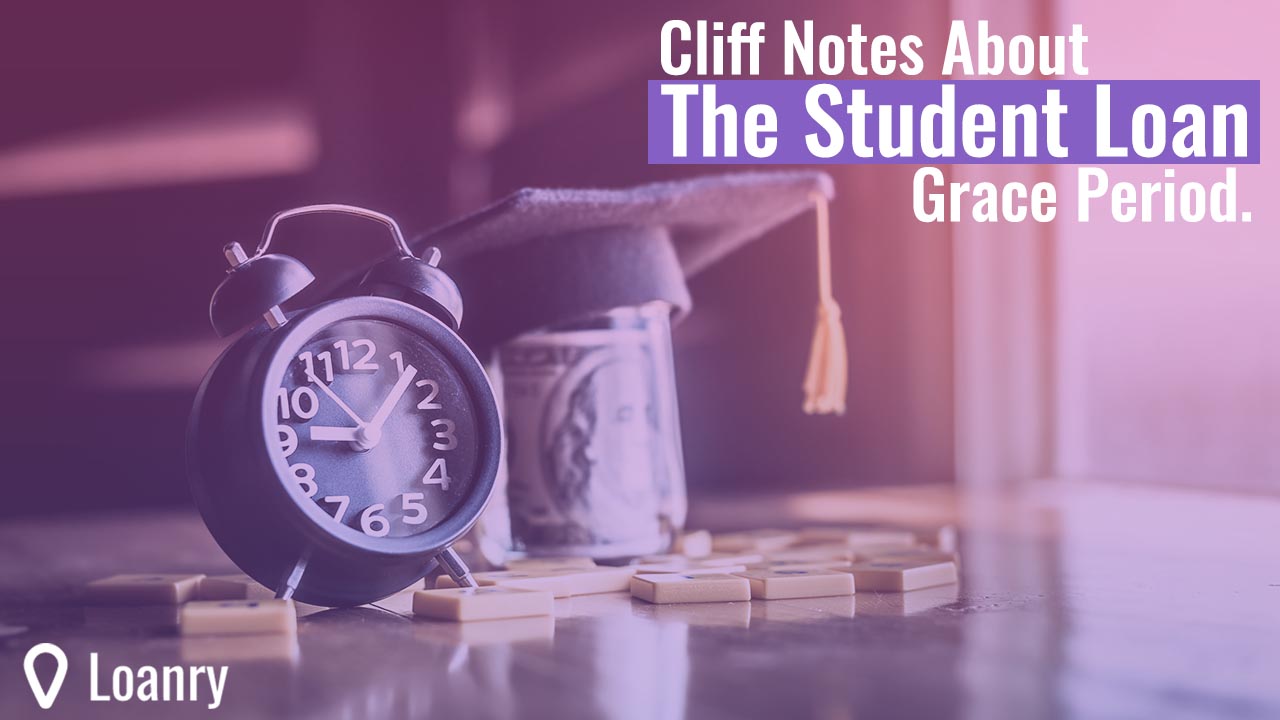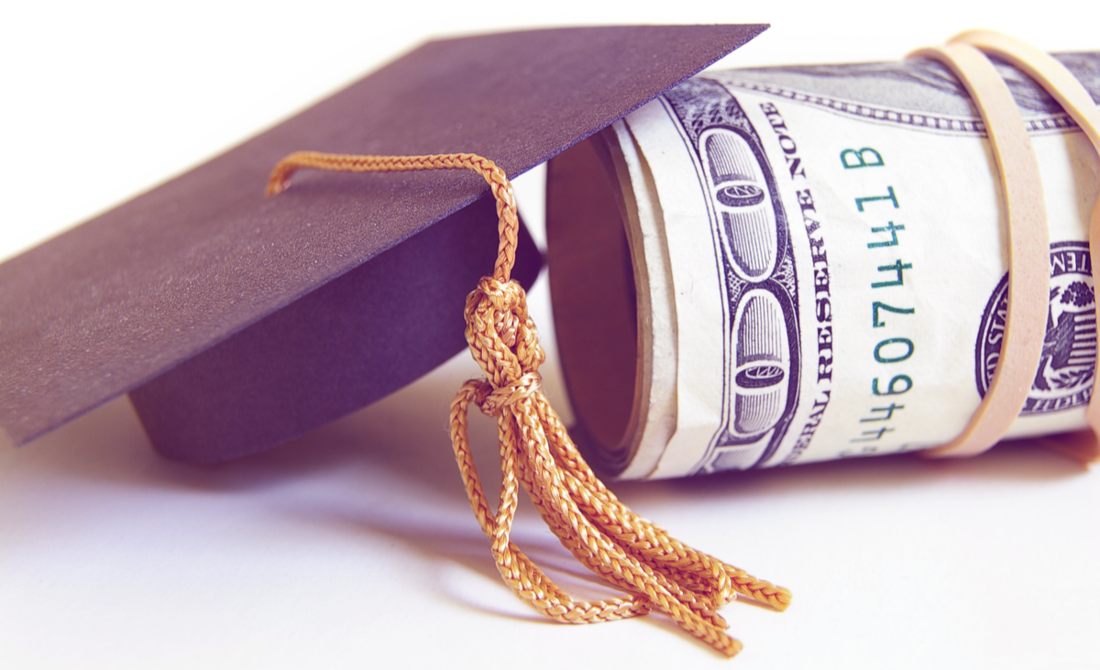
If there is one thing I regret about going to college, it’s having to take out student loans. While I’m grateful that they’re available to help people go to school and potentially provide a better life for their families, I’m aware that things don’t always go as planned. Sometimes, it takes time to make the type of money you need to repay those loans without taking money away from other necessities. And it’s not unusual for it to take decades to repay the full amount. In fact, there are people past the age of retirement still paying student loans. No one wants to be in debt that long.
There are also times when uncontrollable, external circumstances make it impossible to repay loans at all. We’ve been experiencing one of those circumstances through COVID-19 for a few years now. Fortunately, there are things in place that help student loan borrowers – both in times of personal crisis and in global ones. Let’s take a peek at what the student loan grace period and other helpful options look like.
Important Note
Before we jump into things, there is something important to understand: not all loans are created equal. Federal loans are different from private loans, for instance. And federal loans come in different forms. That means each has its own rules for grace periods and interest accrual.
The best way to check the facts in this article as they apply to you is to look at the promissory note you signed when you first took out your loans. That’s the only way to know for sure what applies to you. However, the facts listed here apply to student loans in general and will, at a minimum, give you an idea of what’s going on.
Standard Student Loan Grace Period
Two of the most popular forms of federal student loans are Direct Subsidized Loans and Direct Unsubsidized Loans. Both of these provide a six-month grace period after graduation before your payments are due.
An Important Distinction Between the Two
With Direct Subsidized Loans, no interest accrues during that six-month grace period.
With Direct Unsubsidized Loans, interest begins to accrue as soon as you get the loan. This doesn’t mean the payment is due while you’re in school – just that your interest is growing the entire time you’re enrolled. When you do graduate, you already owe a great deal of interest.
PLUS loans are another common type of federal loan. There is no grace period for PLUS loans, but payments are deferred for six months. Interest starts on these immediately.
There are a few things that can both positively and negatively impact your given grace period, such as the following:
- If you get called to actively serve in the military and your active duty time lasts longer than 30 days, your grace period does not start until your service ends.
- If you decide to consolidate your loans during your grace period, that grace period ends. You should get your first bill within two months of the consolidation process being requested, regardless of when you graduated.
- If you decide to re-enroll in school and attend at least half-time, you’ll get your six-month grace period after you graduate or stop attending your new program.
Those are the basics of your standard student loan grace periods. But they are temporarily different due to COVID-19 – as you’ll see below.

Automatic Student Loan Grace Period
Since COVID-19 began to wreak havoc on the economy, there has been a payment pause on federal student loans. An extension to the original pause has been granted several times. The last extension was in December, giving what is supposed to be a final student loan grace period – or administrative forbearance – that lasts until May 1, 2022.
What Exactly Does it Mean for All of Us Student Loan Borrowers?
At the core, it’s very simple: no payments are due during this time and zero percent interest is being charged on our loans. It also means that no collection methods are being carried out, such as garnishments – that alone is reason enough to breathe.
There are a few other facts to know about this administrative forbearance, including the following:
- Most importantly, you need to know that this forbearance is automatic. There is nothing you need to do to make it happen. The reason it’s important for you to know that is there are some folks who decided to use this forbearance to scam people out of money. They have reached out saying that the borrower could get a forbearance if they paid for it. If someone contacts you in such a way, just hang up.
- You don’t have to worry about remembering the due date. You’ll receive a notification before your payments are due again.
- If you had your payments set on auto-debit, you’ll need to set it back up when payments resume. These auto-payments were suspended when payments were paused, so you’ll need to opt back in when it’s time to pay again.
- You can still make payments on your loans. The good thing, though, is that since they’re not currently due and you aren’t being charged interest, the full amount you pay will go straight to your balance. This also allows you to pay a lower amount than your regular payment if you need to. And remember, every $20 you can put directly towards your loans helps.
- You have the choice to opt out of the administrative forbearance if you want to continue your regular payments, but you may not want to. Again, currently, you’re not paying interest on your federal loans. This means that if you have the money to make your regular payment, you can still do that. However, the full amount will go directly to your balance instead of any interest. This can help you pay down your loans quicker.
- Once again, any amount – even just $1 – that you can pay right now will go directly towards your principal. This is only untrue if you already owe interest from before the forbearance or any fees. In that case, any amount you pay will go to those first.
- If you made any payments during the forbearance, you can contact your loan service provider for a refund of that payment.
The good news is that this administrative forbearance gives us a moment to breathe and get it together. The bad news is that May isn’t that far away, so it’s important that we get it together quickly with the steps below.
Steps to Take Now
Whether you’re reading this when administrative forbearance is about to end or you’re reading down the line and your standard grace period is about to end, there are a few steps you need to take.
- First and foremost, make any payments you can right now. I don’t care if it’s $1 or $1,000. If you can pay on a loan that isn’t charging you interest at the moment, you’ll be decreasing the balance before the interest starts to accumulate. Trust me – it’s worth it. If you can’t find the money in your budget or bank account, have a yard sale or something similar to get a small amount together quickly.
- Know what your payments will be. It’s important that you learn this before you get the first bill. Having this knowledge will help you determine whether or not you can afford your payments.
- If you can afford the payments, let your loan service provider sign you up for the standard repayment plan. Then, set a budget and consider setting up automatic payments so you’re never late. We’ll talk a little more about budgeting your payments in the next section.
- If you can’t afford the payments, apply for an IDR or income-driven repayment plan. These are extra handy as they can significantly decrease your monthly payments. In some cases – if your income is low enough – it can move your payment all the way down to $0. You do have to reapply for your IDR, so your payment amount will change if your income does. Also, understand that this will keep you paying loans for longer. However, IDRs can help during rough times and give you a little extra time to make the income you need.
Budgeting for Your Student Loans
It doesn’t matter if your student loan payments are $10 per month or $1,000, you need a budget that can help you get them paid. If you don’t already have a budget, it’s time to get to work. Don’t get overwhelmed, though. A budget is nothing more than a plan that tells your money where to go – and you are in charge of that budget.
When working out your budget, you can use a handy pen and paper at the beginning. It’s always helpful, though, to put everything into a budgeting app to help you stay on track.

Goalry is a good option for this. It does not only help you track your budget but can help you get your entire financial life in order. You can track your payments, track your financial goals, track any investments, find tips and tricks for saving money, and much more.
To start, simply write down everything you pay and spend each month. Be sure to add in your student loans. Once you’ve added it all up, compare the total to your income. Do they match? If so, good job.
Cut Down Your Expenses
If you need to pay out more than you make, you’ll need to find ways to cut down. This is easy if you spend $20 a week on coffee and have a gym membership you never use.
However, if you’re already living on a tight budget that doesn’t allow any splurging, it can be a bit more difficult. In such a case, you’ll need to go line by line to determine where you can cut. If you haven’t already, apply for an IDR to lower your student loan payment.
You might also find that you pay for three streaming services, you could cut down on your electric bill by turning out the lights when you’re not in the room, and carpooling could help you save on gas. There are plenty of ways to save a few bucks here and there if you really dig in.
If you just can’t find enough to make your budget happen, you might consider a second job or side hustle. Trust me, I get it. No one wants to have to work more than they do. However, I’m also willing to bet you don’t want to be paying your student loans at 70. Even just working a second job once a week can help prevent that.
What If I Have Private Loans?
So we’ve made it clear that the administrative forbearance is for federal loans. This leads people to wonder if there is anything they can do about private loans. The answer is “Yes.”
While private loans aren’t subject to the same rules as federal loans, most lenders will work with you. You can ask for a lower interest rate or a payment deferment. While not all will provide these things, some will, so it’s always worth asking.
You can also consider consolidating your loans. Some – such as FFEL loans and Perkins Loans – can be consolidated with a Direct Consolidation Loan, which is provided by the Department of Education. However, it’s important to understand that consolidating could potentially lead to higher interest and less favorable loan terms. Before you make a decision, ask how exactly your loans will be impacted so that you can make an informed decision.
Conclusion
Student loans can be quite a burden to bear. However, any grace period gives the opportunity to either make more money or get an income-driven repayment plan in place. While it’s not going to make our loans disappear altogether, it’s important that we take advantage of the time we’re given to work out a potentially positive solution.

Brandy Woodfolk is an educator, home business owner, project manager, and lifelong learner. After a less than stellar financial upbringing, Brandy dedicated her schooling and independent studies to financial literacy. She quickly became the go-to among family, friends, and acquaintances for everything finance. Her inner circle loves to joke that she is an expert at “budgeting to the penny”. Brandy dedicates a large portion of her time to teaching parents how to succeed financially without sacrificing time with their little ones. She also teaches classes to homeschooled teenagers about finances and other life skills they need to succeed as adults.
Brandy writes about smart money management and wealth building in simple and relatable ways so all who wish to can understand the world of finance.
